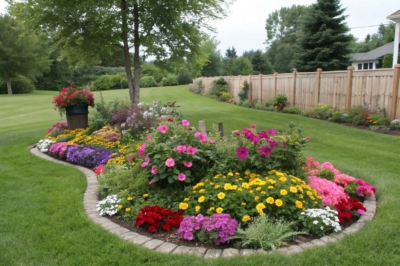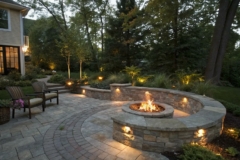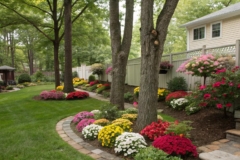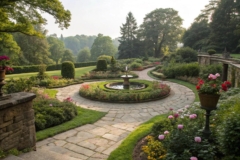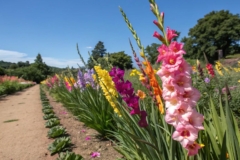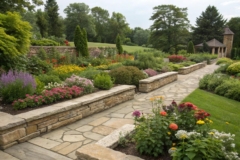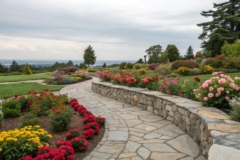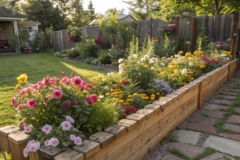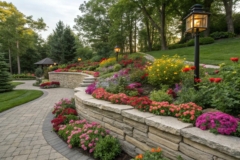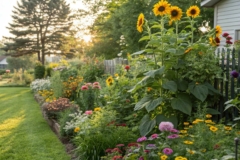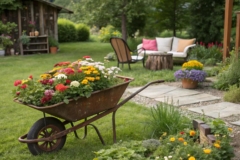1. Shade-Loving Compositions
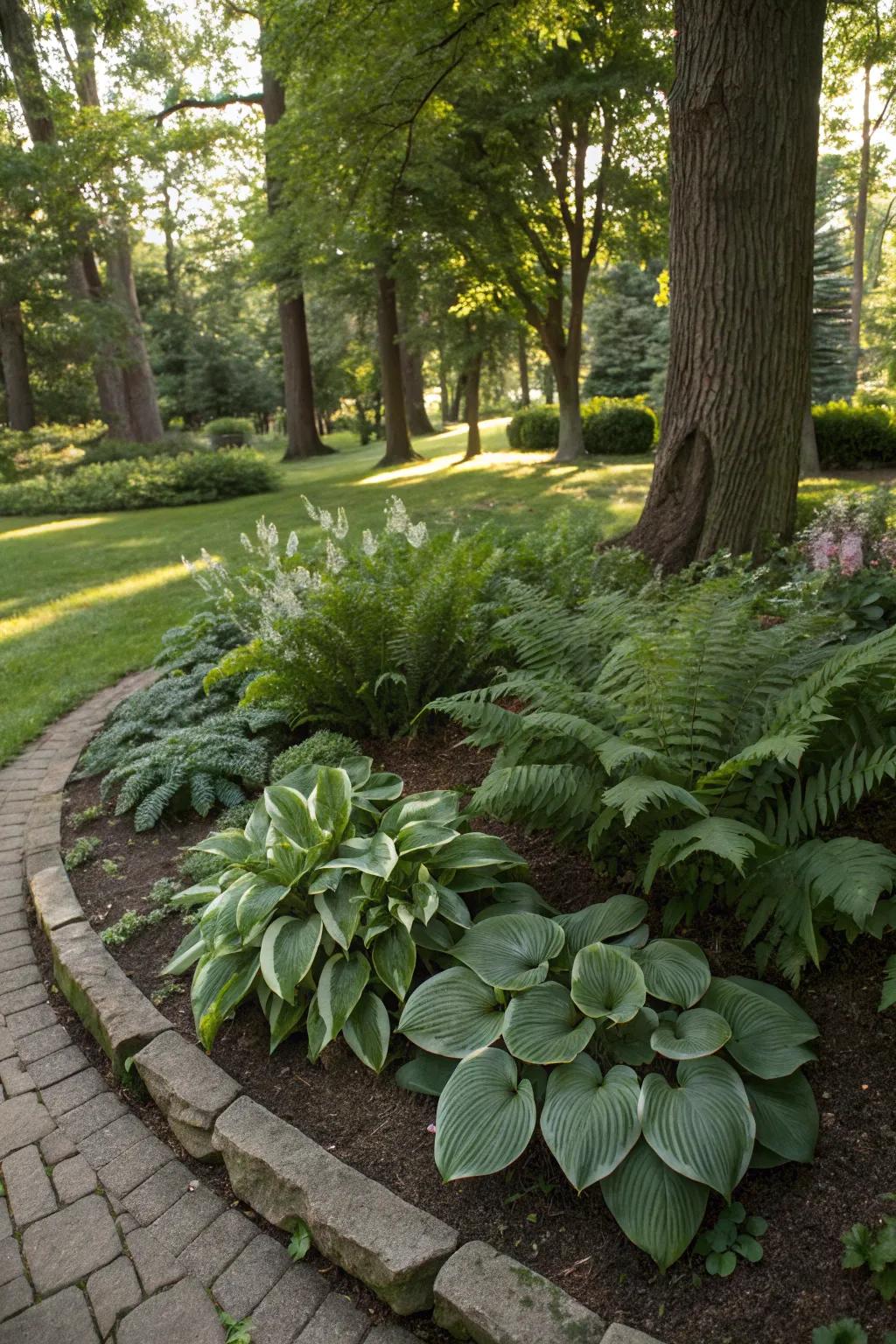
For shady spots, plant shade-loving species like hostas and ferns. These plants thrive without direct sunlight, and I adore the lush, tranquil vibe they bring to my shaded beds.
You might like:
- Hosta Plant Collection: Enhance your garden’s tranquility with lush, shade-loving hostas. Ideal for serene garden settings.
- Fern Variety Pack: Add natural elegance to shaded areas with versatile ferns. Perfect for lush, green landscapes.
- Garden Soil for Shade Plants: Ensure healthy growth for shade plants with nutrient-rich, moisture-retaining garden soil.
2. Seasonal Color Changes

Select plants that offer seasonal color to enjoy blooms all year round. In my garden, I love watching the transition from spring pastels to vibrant summer hues.
Possibly handy products:
- Seasonal Flower Seed Mix: Embrace seasonal transformations with a colorful flower seed mix for continuous blooming all year.
- All-Weather Garden Plant Markers: Keep track of your seasonal blooms with durable garden plant markers for easy identification.
- Adjustable Garden Hose with Sprayer: Effortlessly water your seasonal blooms with an adjustable garden hose for optimal plant care.
3. Incorporating Edibles

Mix in some edible plants like herbs or salad greens for a practical twist. I love being able to step into my garden and pluck fresh ingredients for dinner.
Consider these options:
- Herb Garden Starter Kit: Step into freshness and cultivate your own herbs with this easy-to-use starter kit.
- Raised Garden Bed Planter: Enhance your gardening space with this durable raised planter, perfect for edibles and flowers.
- Organic Salad Green Seeds: Grow your own fresh salad greens conveniently with these organic seeds for a homegrown touch.
4. Lighting for Nighttime Drama
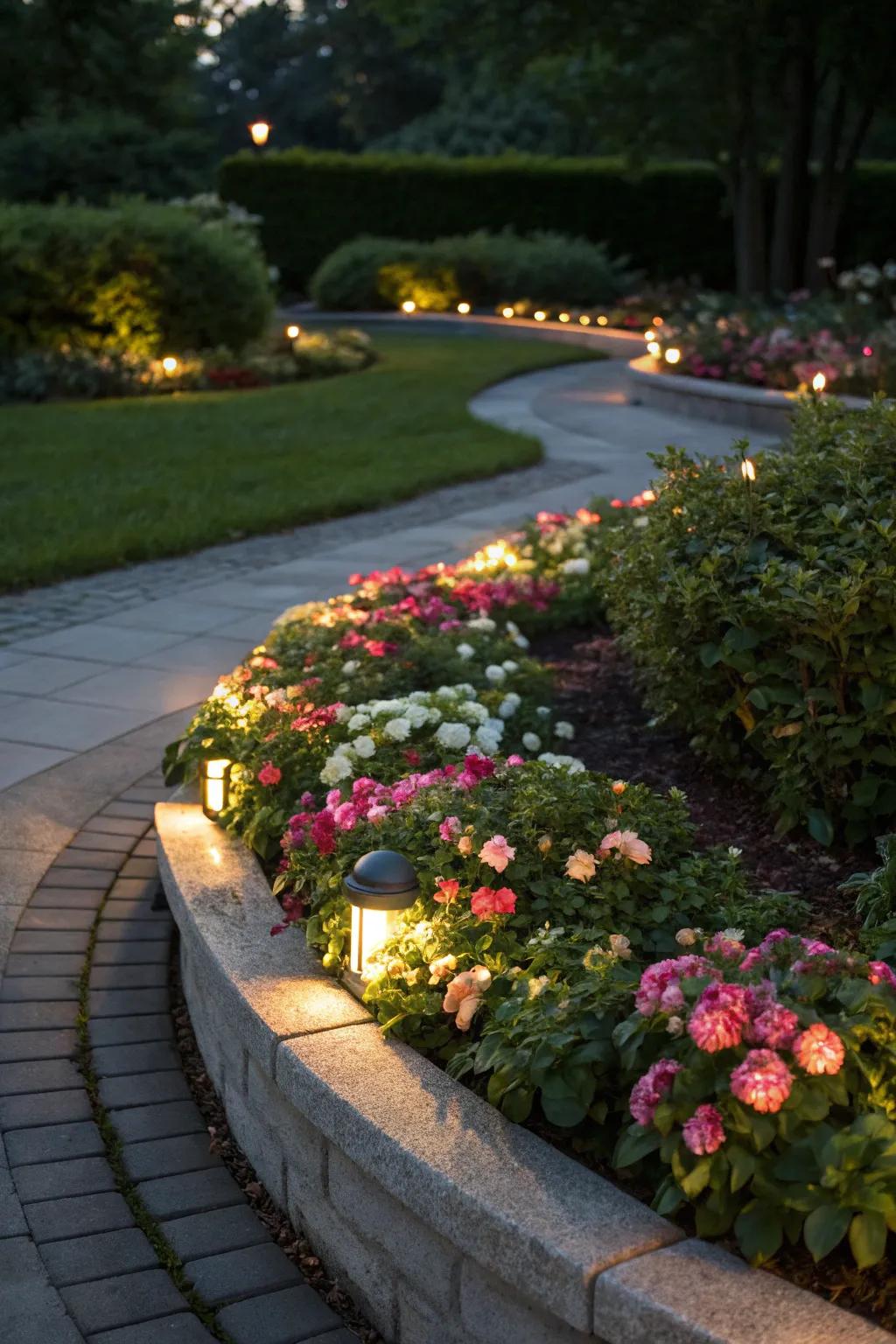
Install subtle garden lighting to highlight your flower bed after dark. The soft glow creates a magical atmosphere, making evening garden strolls a true delight.
You might give these a try:
- Solar Garden Path Lights: Illuminate your garden pathways with eco-friendly solar lights, creating a charming evening atmosphere.
- LED Landscape Spotlights: Highlight your flower beds with energy-efficient LED spotlights for a stunning nighttime display.
- Low-Voltage Garden Lighting Kit: Easily install a versatile lighting kit to enhance your garden’s beauty after sunset.
5. Mix of Textures
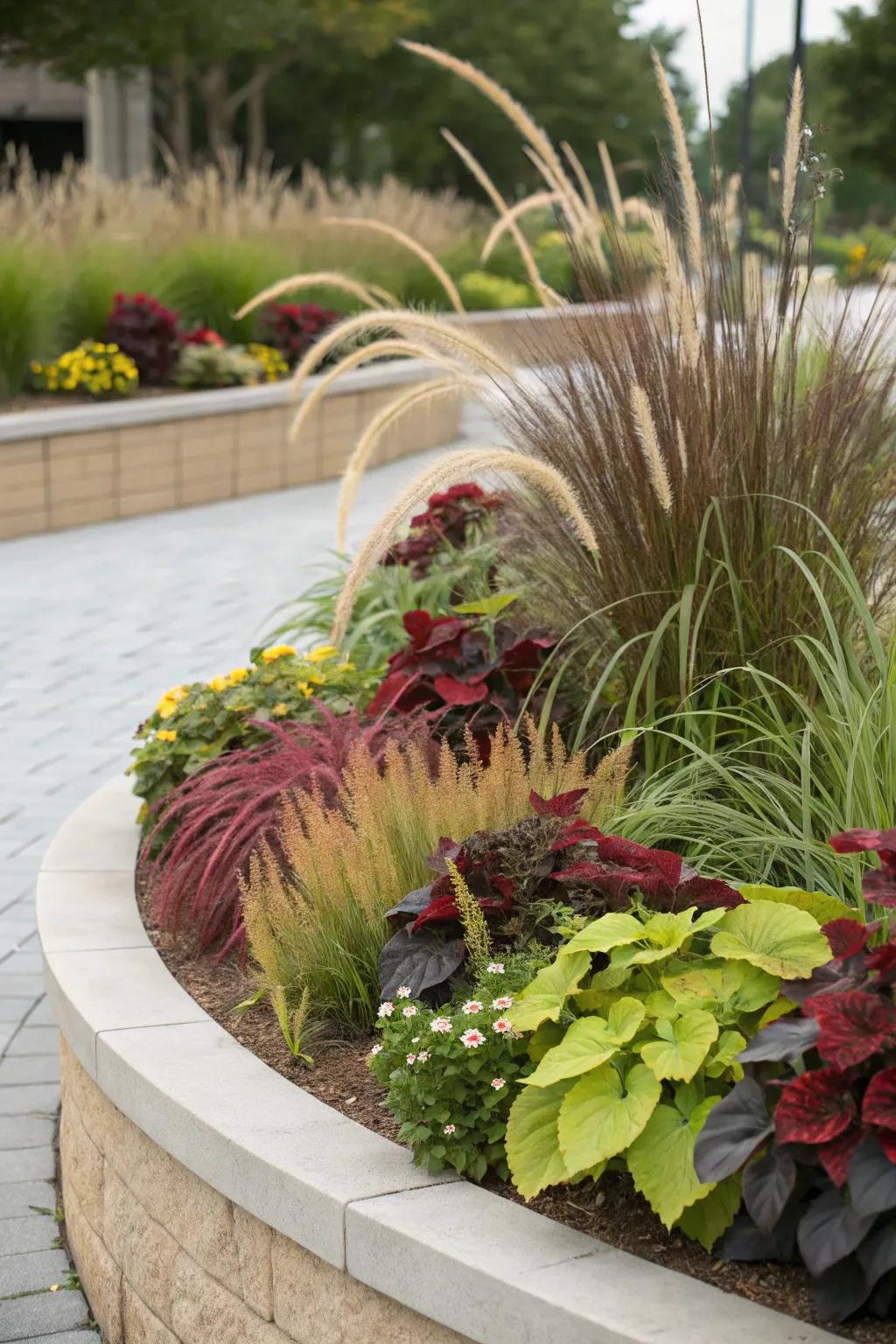
Combine different textures, such as feathery grasses and bold-leaved plants, for a visually striking composition. This mix adds depth and interest, a trick I love using to keep my garden lively.
A few choices to try:
- Assorted Ornamental Grasses: Explore vibrant ornamental grasses to bring dynamic texture and movement to your flower bed.
- Bold-Leaved Plant Collection: Enhance your garden with bold-leaved plants, adding depth and striking visual interest.
- Curved Garden Edging Stones: Define your garden’s shape and add elegance with these durable, stylish curved edging stones.
6. Functional Pathways

Add a functional pathway with stepping stones or a gravel path to enhance both accessibility and beauty. I’ve found this especially useful for navigating the bed without trampling my blooms.
Explore these options:
- Garden Stepping Stones: Enhance your garden’s accessibility and beauty with durable, natural-looking stepping stones.
- Decorative Gravel: Create an inviting garden path with attractive and easy-to-install decorative gravel.
- Pathway Edging Stones: Define and protect your garden paths with stylish and robust edging stones.
7. Curved Delight
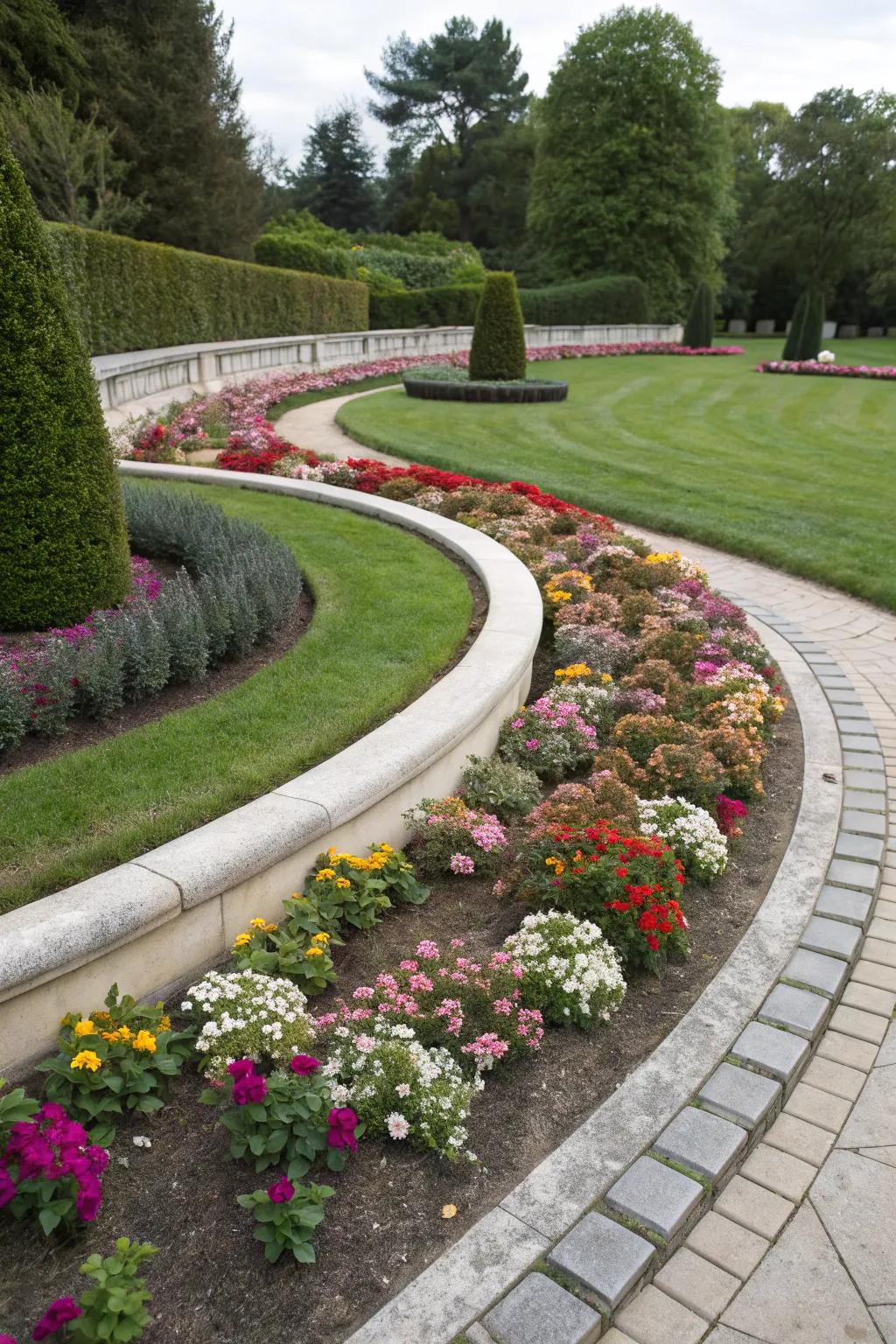
Embrace the natural curve of the half-circle to create a visually pleasing design. This shape naturally draws the eye and adds a dynamic element to any garden.
These products might help:
- Decorative Garden Edging: Frame your half-circle flower bed beautifully with easy-to-install, stylish garden edging.
- Solar Garden Lights: Illuminate your curved flower bed at night with eco-friendly solar-powered garden lights.
- Colorful Perennial Flower Seeds: Enhance your half-circle design with vibrant, long-lasting perennial flowers easily grown from seeds.
8. Water Feature Wonder
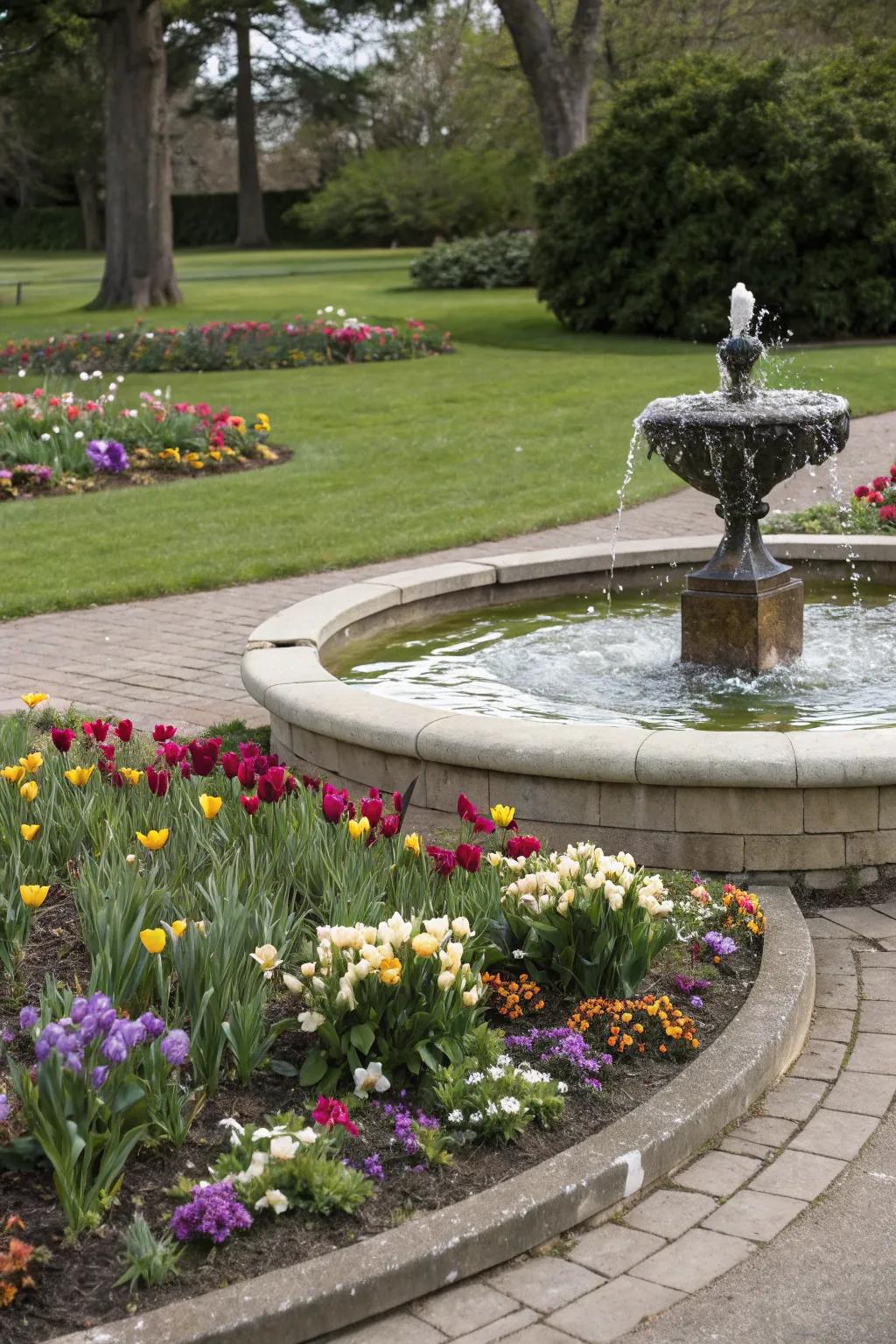
Incorporate a small water feature for a soothing sound and a touch of elegance. I’ve added a petite fountain to my bed, and it’s become a peaceful spot for reflection.
Useful items to consider:
- Outdoor Garden Fountain: Transform your garden with a classic outdoor fountain, enhancing relaxation with soothing sounds.
- Solar Water Pump Kit: Power your fountain sustainably with a solar water pump, perfect for eco-friendly gardens.
- Fountain Water Treatment: Maintain water clarity and prevent algae with a specialized fountain treatment solution.
9. A Symphony of Plant Varieties
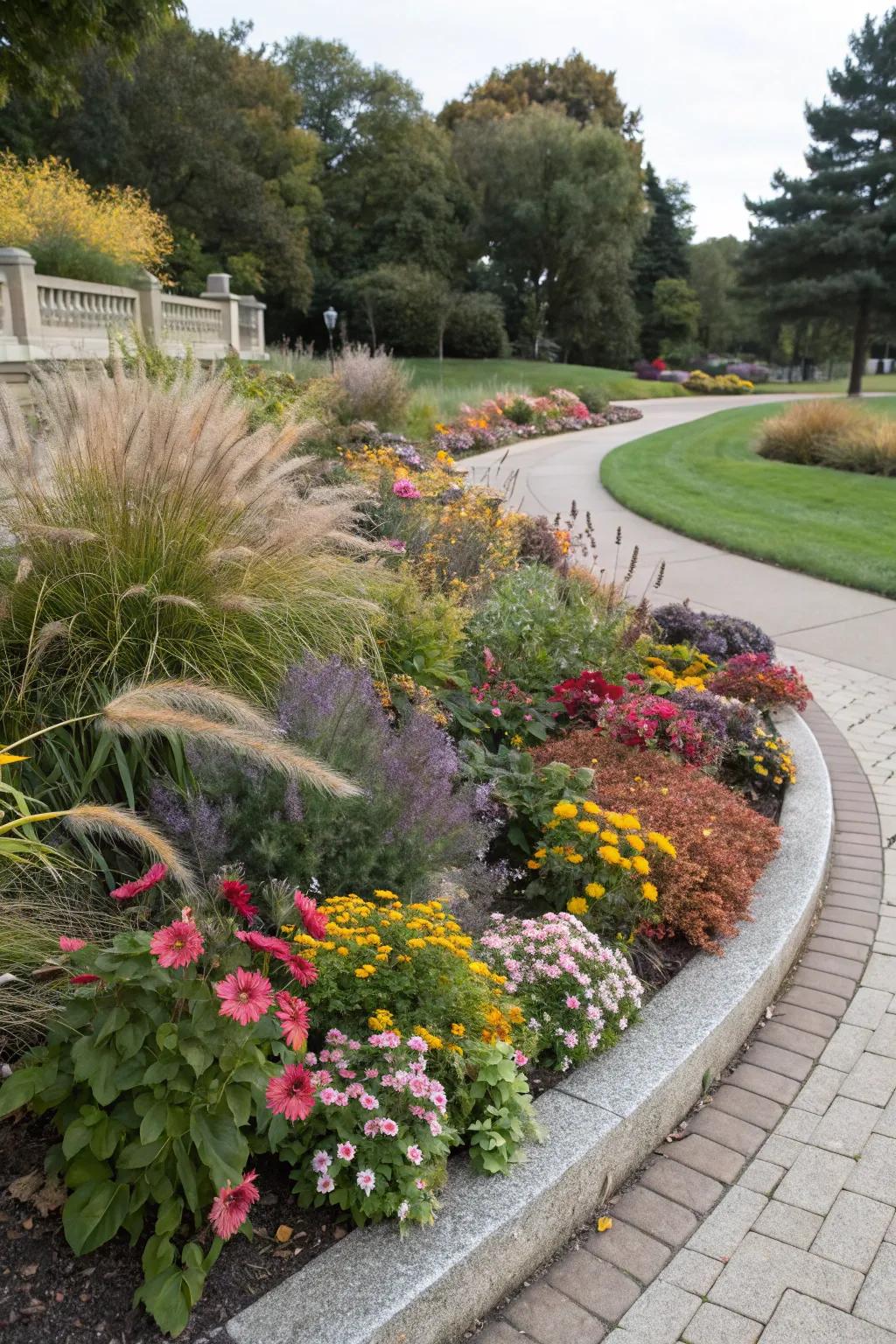
Mixing perennials, annuals, and ornamental grasses creates a dynamic texture and color palette. In my garden, this variety keeps the bed interesting throughout the seasons.
Might be a good match:
- Mixed Perennial Flower Seed Pack: Enhance your garden’s charm with these vibrant perennial blooms, perfect for year-round beauty.
- Annual Flower Seed Variety Pack: Add fresh bursts of color each season with this wide assortment of annual flower seeds.
- Ornamental Grass Seed Mix: Create dynamic texture in your garden with easy-to-grow ornamental grass seed mix.
10. Color Block Planting
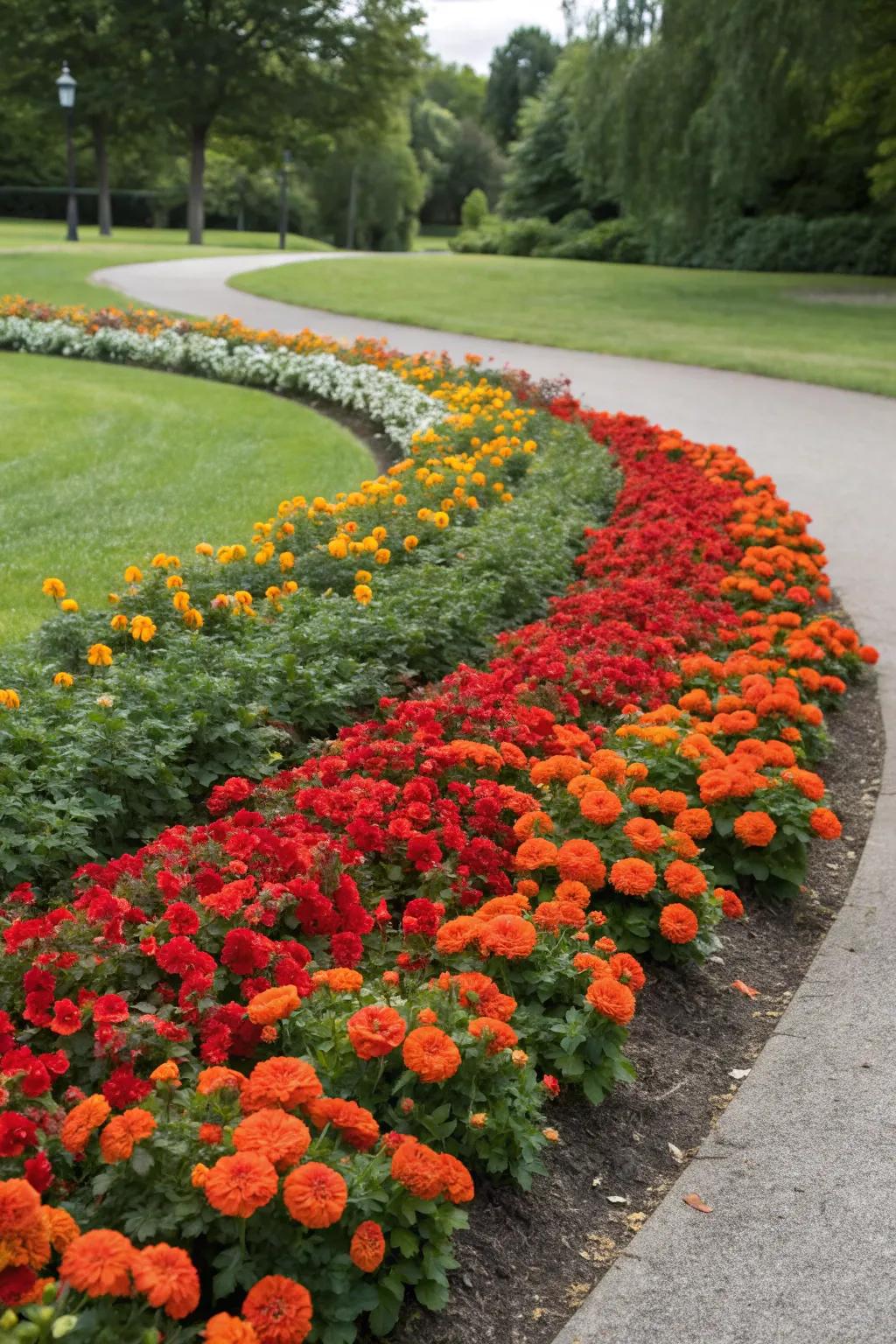
Create impact with color blocks, grouping plants of the same color for a dramatic effect. I’ve used this technique to stunning results, especially with bold reds and oranges.
A few helpful options:
- Red Flower Seeds Package: Transform your garden with vibrant red blooms, perfect for creating striking color blocks.
- Orange Flower Seeds Package: Add a burst of orange to your flower bed for a warm, inviting garden display.
- Garden Edging Kit: Define your flower beds neatly with this easy-to-install garden edging solution.
11. Native Plant Focus
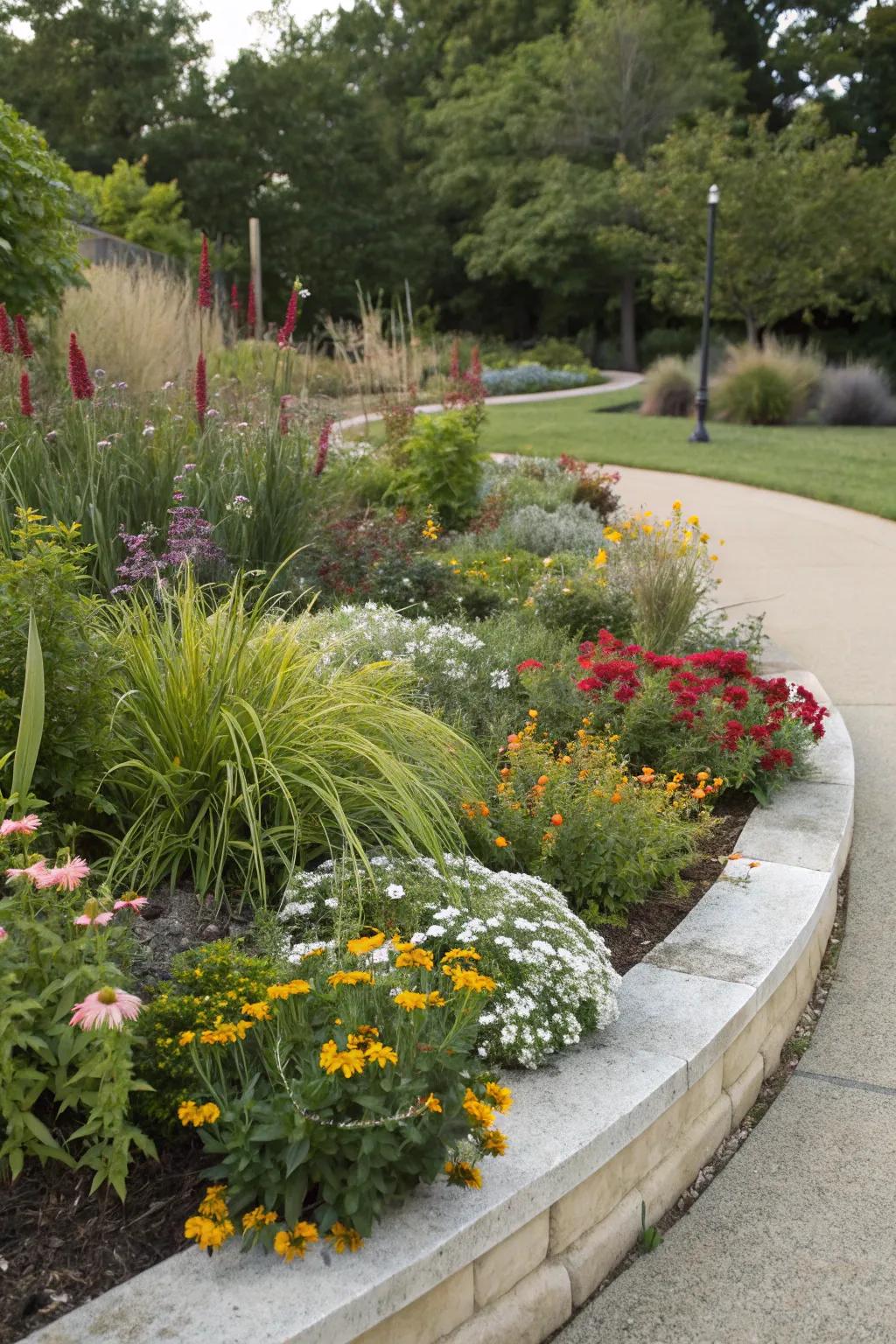
Opt for native plants that require minimal care and water. In my Texas garden, local species have proven resilient and beautiful, making them a practical choice.
Maybe worth checking out:
- Native Wildflower Seed Mix: Enhance your garden’s resilience by planting these easy-to-grow native wildflowers today.
- Eco-Friendly Garden Mulch: Retain soil moisture effortlessly and support local plants with this sustainable mulch option.
- Drip Irrigation Kit: Ensure optimal watering for your native plants with this efficient drip irrigation system.
12. Wildflower Meadow Magic
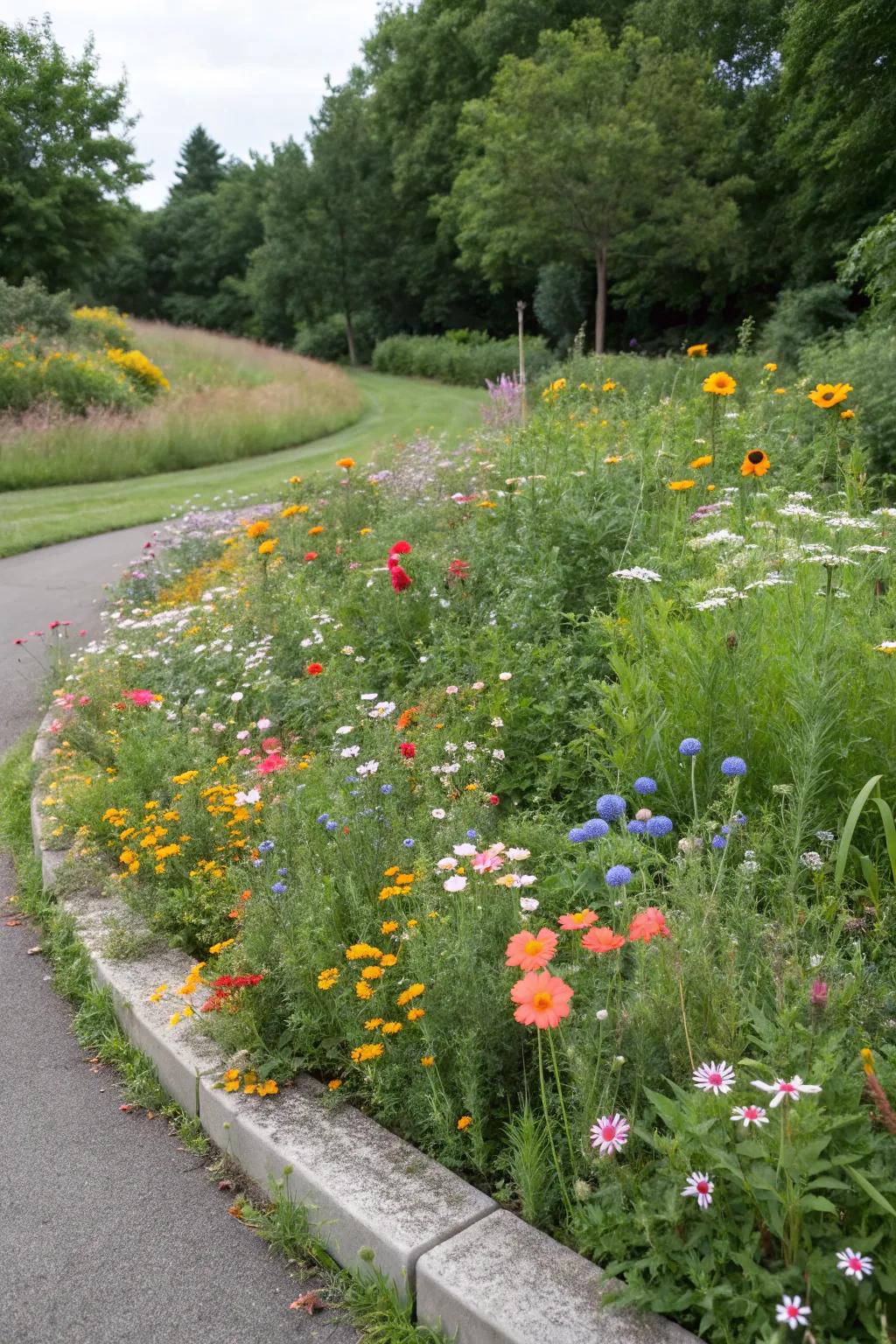
Transform your bed into a wildflower meadow for a carefree and natural look. This approach attracts pollinators and brings a delightful array of colors and textures.
Possibly helpful picks:
- Wildflower Seed Mix: Cultivate a vibrant wildflower display with this diverse seed mix. Perfect for pollinator attraction.
- Organic Soil Enhancer: Boost growth naturally with this organic soil enhancer. Improve plant health and vitality.
- Pollinator House: Invite beneficial insects with a cozy pollinator house. Enhance your garden’s ecological balance.
13. Integrating with Existing Landscapes
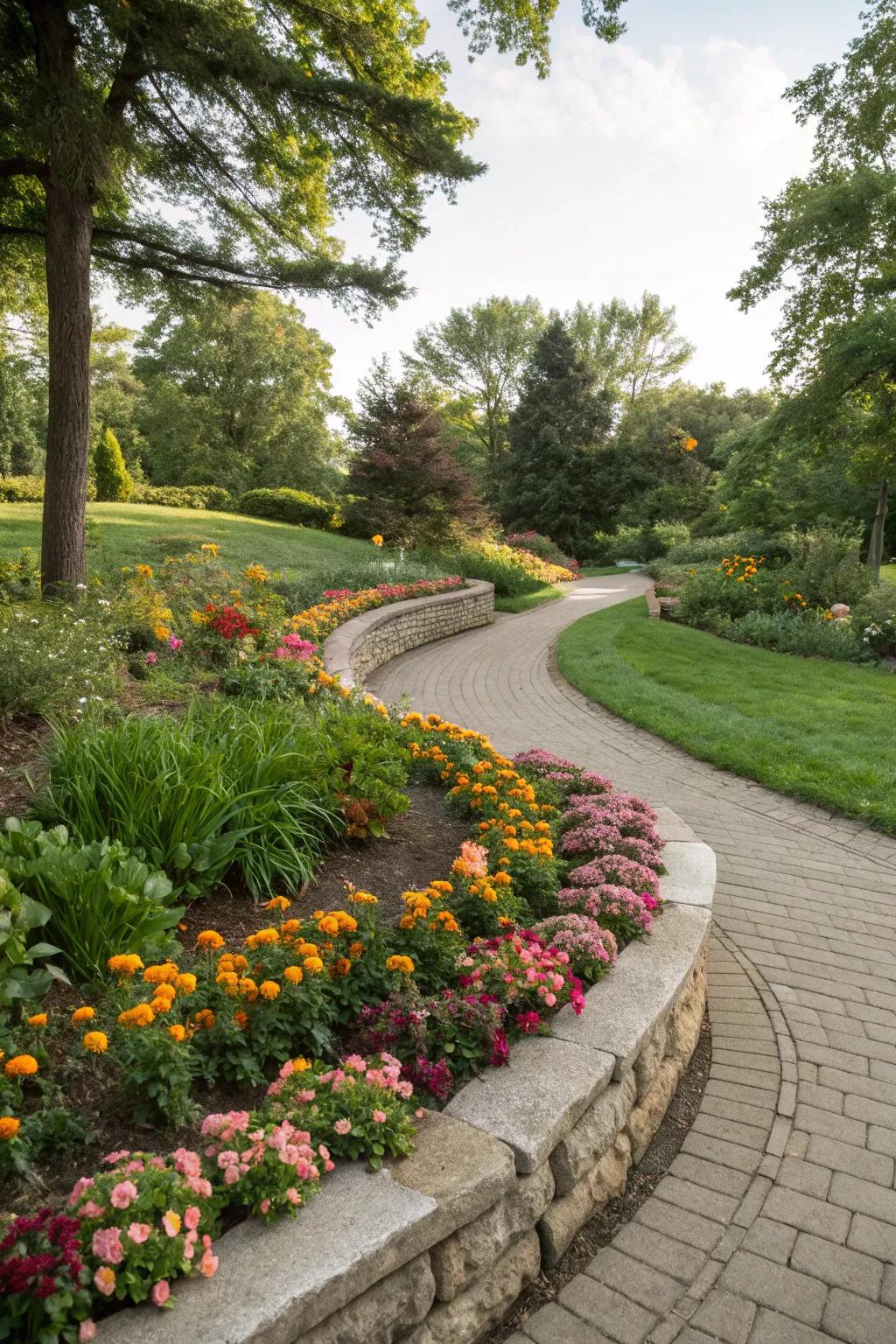
Place your flower bed strategically near existing paths or walls to create a seamless flow in your garden design. I love how my half-circle bed complements the curve of my garden path.
Check if these fit your needs:
- Outdoor Garden Path Lights: Enhance your garden path with ambient lighting. Illuminate and beautify your flower bed today.
- Decorative Garden Edging: Define your half-circle flower bed with stylish edging. Optimize your garden’s aesthetic appeal.
- Landscape Weed Barrier Fabric: Prevent unwanted weeds in your flower bed. Ensure vibrant, healthy plants effortlessly.
14. Popping with Pots

Add height and interest by incorporating planters and pots within your flower bed. I often use this technique to feature taller plants or those with contrasting colors.
Give these a look:
- Terracotta Planters: Elevate your garden with rustic terracotta planters that add warmth and earthy elegance.
- Tall Decorative Plant Stands: Create vertical interest with tall plant stands, perfect for showcasing your vibrant plant collection.
- Ceramic Flower Pots: Enhance color contrasts by using stylish ceramic pots in assorted colors and sizes.
15. Defined with Stone Borders
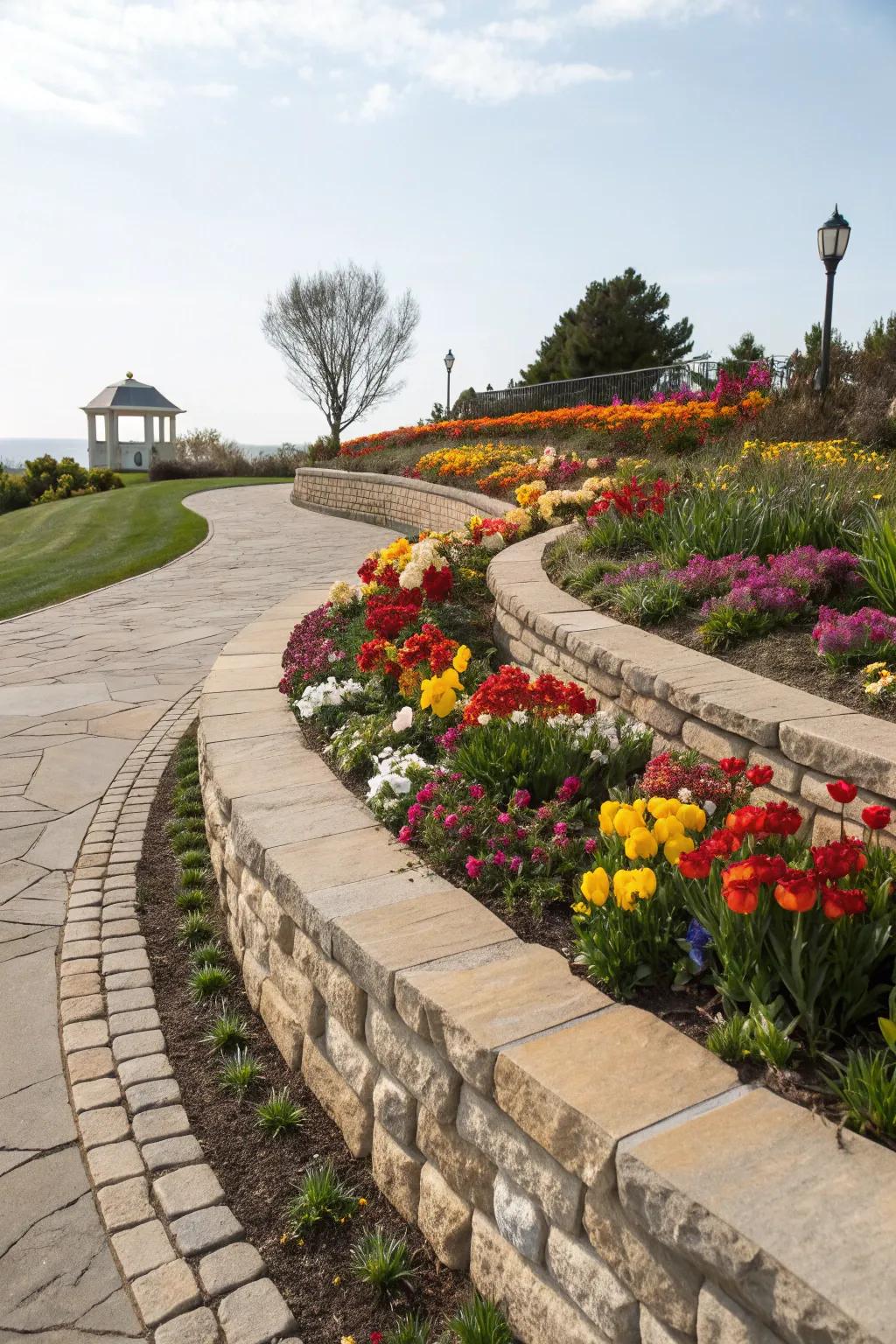
Using stone borders gives your half-circle bed a neat, structured look while adding a rustic charm. I once used this method in my backyard, and it really made the colors of the flowers pop against the gray stone.
Try these:
- Garden Stone Edging Kit: Enhance your flower beds with easy-to-install, durable stone edging for a clean, rustic look.
- Landscape Border Stones: Upgrade your garden design by adding robust landscape border stones for a structured appearance.
- Decorative Stone Edging Set: Add charm to your flower beds with decorative stone edging that highlights plant colors beautifully.
